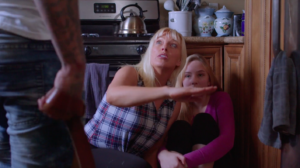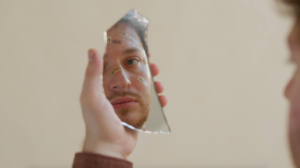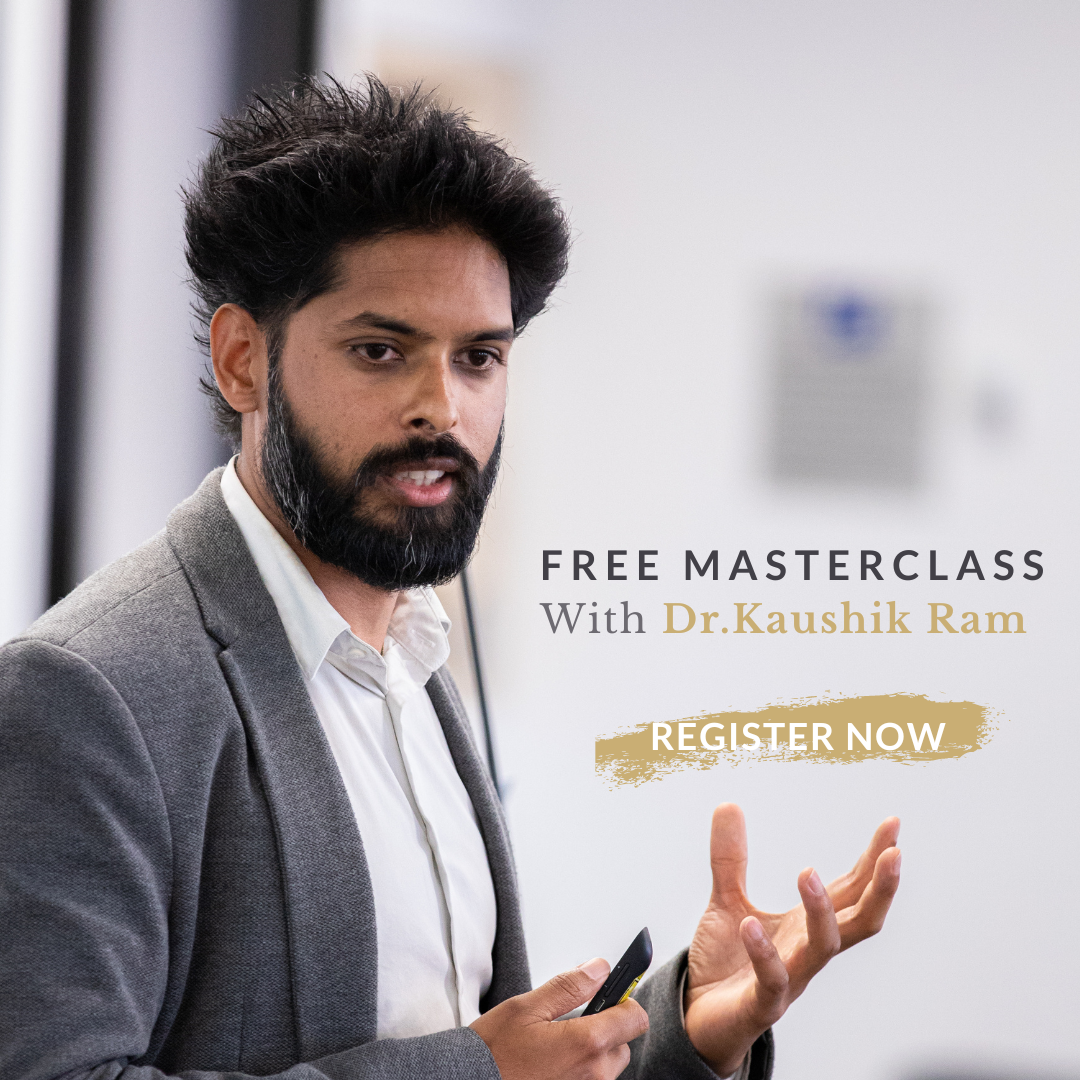The INSANE Truth about Childhood Trauma
Childhood trauma when unspoken, remains trapped in time.
Adverse childhood experiences reduces life expectancy by 20 years.
Childhood trauma magnifies dysfunctional relationships.
Question is – should we be paying attention to experiences that the brain has tried so desperately to cover up?
If you looked at the Adverse Childhood Experience (ACE) score – nearly half of all adults have experienced at least one adverse event before the age of 17. It might not be immediately obvious but…
This is the person who is trying to be someone because they were told they were not good enough.
This is the person who trusts no one because no one was there to save them when they felt alone.
This is the person who is convinced that no one will understand their problems so, refuse to speak up in the first place.
This is the person who puts on a brave face yet without vulnerability they cannot afford tears and be comforted.
It does not matter how well we compartmentalised everything inside, we will still find ourselves falling apart when these patterns are running in the background of our life.
In this video, I will explore how trauma drives our motivation by altering interconnected pathways of reward, memory and fear. But this video is not about shining a light on memories that last a life time but recognising the meaning behind your story so you can make your relationships worthwhile and feel loved by those who are important to you.
Part 1. The Childhood Dream
 Humans are notable for the longest period of parental care of any species on the planet. This period of parental care extends long into adolescents and is the most crucial period a child’s brain development and long-term attachment patterns.
Humans are notable for the longest period of parental care of any species on the planet. This period of parental care extends long into adolescents and is the most crucial period a child’s brain development and long-term attachment patterns.
It is important to understand that whole brain development does not occur proportionally. The amygdala -essential for the decoding of emotions, is fully developed in adolescence. Meanwhile, the prefrontal cortex (PFC) is still developing logic and critical reasoning and matures slowly up until early adulthood.
Thus, impulsive emotions and feelings outweigh critical thinking and logical decisions, even though teenagers may be aware of the imminent danger. This imbalance is a critical stage in brain development as the brain is deciding how to piece reality together for the best chance of survival.
The PFC is made of two overlapping neural networks: firstly the orbitofrontal cortex (OFC) that determines motivation and reward and the dorsolateral prefrontal cortex (DLPFC) involved in working memory and theory of mind reasoning.
Environments that put kids at a higher risk of adversity has serious implications on a brain’s executive function, resulting in falsifications and distortion in self-referential thoughts. This creates dissonance in the brain’s reward mechanisms results in and avoidant and dismissive attachment style later in life.
Coping mechanism: Avoidant/Dismissive
The avoidant attachment is where the individual is strong, independent, self-reliant, has high self-esteem running on the false belief that they won’t receive anything in return. Their relationship with reward is flawed as they may not have been acknowledged for the accomplishments or valued for their affection.
 Trouble is that no matter how much they do, it’s never enough. In a relationship they will benevolently avoid intimacy and emotional closeness. The idea is to suspend their emotions and focus on what will guarantee them love and their worth is invested in money, positions of power and working till they drop. Free time scares them as they are conditioned to believe that their worth is dependent on what they do rather than who they are. Free time also means that feelings will come up and can interfere with efficiency in getting the job done.
Trouble is that no matter how much they do, it’s never enough. In a relationship they will benevolently avoid intimacy and emotional closeness. The idea is to suspend their emotions and focus on what will guarantee them love and their worth is invested in money, positions of power and working till they drop. Free time scares them as they are conditioned to believe that their worth is dependent on what they do rather than who they are. Free time also means that feelings will come up and can interfere with efficiency in getting the job done.
When the reward circuity is hijacked by overdoing to compensate for the lack of acknowledgement, it can seem that externally they have got everything together but internally this further perpetuates the distance to themselves. Now lets have a look at how trauma affects our memory network to drive hidden motivators that keeps us trapped in what we don’t want.
Part 2. Trapped in the memories of time
Exposure to prolonged traumatic experiences disrupts the hippocampus and orbitofrontal circuitry, fragmenting parts of the traumatic experience and the encoding of autobiographical memory where chucks of the memory is missing. This is easily dismissed as – I was so drunk that I backed out, but more specifically is referred to as autobiographical nulling – where the brain blocks out what it doesn’t want you to see. This can lead to formation of negative schemas such as self-blame, shame and lack of trust in others including disturbing kinesthetics sensations.
The failure to integrate memory shows up as marked hyperemotional state of the nervous system and manifests as unstable or ambiguous behaviours.
 Environments that put kids at a higher risk are: inconsistent and unpredictable childhood experience of physical, emotional and sexual abuse. This is where – what was meant to be a source of safety has become the source of fear. The child does not know what to expect and their need remain unresolved. Unpredictable and shocking emotions can also become a source of getting attention.
Environments that put kids at a higher risk are: inconsistent and unpredictable childhood experience of physical, emotional and sexual abuse. This is where – what was meant to be a source of safety has become the source of fear. The child does not know what to expect and their need remain unresolved. Unpredictable and shocking emotions can also become a source of getting attention.
Case study: Conversion Disorder
Almost a decade ago, I was working in the Department of Psychiatry at Westmead Hospital which is the largest in the Southern Hemisphere. I was with a 8 year old girl who had come in for an EEG and MRI scan. Her traumatic experiences led her to have seizures at exactly 8pm every night and her memory would go blank from that moment on, until she woke up next morning. Clinically we call this conversion disorder. What was shocking was that, she was an absolute delight to work and did not remember the horror of the seizure of the night before. This is an example of autobiographical nulling.
Coping mechanism: Disorganised and unresolved
The disorganised attachment is where the individual is frightened by intrusive flashback, are easily triggered and therefore: dissociate from their body to avoid feeling pain. They have a vacant look in their eyes when they talk about the past.
As adults, they are conditioned to expect the worst case scenario and self-sabotage prematurely to avoid rejection, disappointment and pain. The sad thing is that this self-fulfilling prophecy has become part of an innate behavioural pattern known as procedural memory. Procedural memory refers to patterns that have become second nature like driving a car or tying your shoelace.
The procedural memory now retrieve flashbacks to perpetuate traumatic experiences. This is apparent when you return to a relationship held together by a trauma bond. You end up repeating the same patterns even though you thought you had moved on. The disorganised individual will behave in ways that are unstable and chaotic. They will often overcommit only to let their partner down in order to confirm their suspicion that other people cannot be trusted, no matter what!
Procedural memory also means that the disorganised individual habitually chooses partners that are not right for them. A healthy relationship terrifies them because if something is not wrong, they don’t want it to be right. So, without a second thought, they will procedurally setup the conditions for the abuse to become recurring even when there is no sign that their partner will betray them and their new partners unwilling fall into the trap.
Part 3. Misunderstood Reptilian Brain
The human species is tribal in origin and belonging is a natural part of our basic needs. As such, parents have an innate intuition to know what is going on with their child even when the child hasn’t yet learnt to formulate words. This helps children with their self-development to feel safe and naturally discover the world.
The basic premise in psychology that the reptilian brain is somehow primitive, ancient and unchanged is one of the most flawed arguments in psychology. Classical psychology is built on the foundation that the reptilian brain is in charge of our survival mechanism and is somehow limiting us. The field of psychology is silent when it comes to function of the reptilian brain when we are not in a state of threat.
What we dismiss as reptilian is evolutionary the oldest and therefore the most well-developed part of our brain. It has had the longest period of time to evolve. The more connected we are with our to our survival drives, the better we are at reading out instinct and intuitions. I make a clear distinction between what is instinct and what I call intuition.
Instinct occurs before the mind has the opportunity to respond. This can be sensory-motor in nature, such as your hand springing off a hot plate before you feel pain. Or it can be a gut instinct, one of the most primitive motivations. For example, we may feel disgusted by food that has gone rancid. The same instinct kicks in when we come across someone toxic. We instinctively feel that there is something off with this person. We call this our gut instinct.
Intuition is the ability to listen to your heart. For this reason, intuition is often counterintuitive and may go against what you like to think. When someone is traumatised they are terrified to exist in the only place they can feel safe – in their own body. They suppress the their intuition. When you say listen to your heart, they don’t understand what you are referring to, as they checked out of their body and stopped listening to their heart a long time ago.
When we are separated from our most basic survival drives – we suppress our desires to do what we think is right and in doing so become distant from ourselves. We are educated out of our body and our intuition and instinct design for survival is replaced by intellect. The moment we refused to listen to our heart, fear consumes the mind and we become chronic thinkers – anxious and insure trying to survive in a sea of doubt.
Coping mechanism: Anxious and insecure
How we develop our world view is largely dependant on being seen, valued and loved. When fear is introduced to our fundamental needs, we being to develop a flawed view of the world. To be ourselves, trust our instincts and feel safe in our own body is no longer true. Ultimately we believe that we cannot be loved.
As adults the anxious and insecure are often incapable of being alone and depend on intimacy and a sense of closeness. Yet, their underlying thought formation that they cannot be loved means that no amount of love, affection or intimacy will be enough. As a result, they become preoccupied with their relationship, overly invested, and needy. The perpetual need for approval, validation and reaction from their partner is a desperate cry to feel loved. The very thought of being without a partner causes high levels of anxiety.
 Trouble is: without feeling safe, they could be lying in the most comfortable bed in the most expansive hotel room and still worry themselves sick if they do not feel seen, even when their partner is right next to them.
Trouble is: without feeling safe, they could be lying in the most comfortable bed in the most expansive hotel room and still worry themselves sick if they do not feel seen, even when their partner is right next to them.
What we demonise as the reptilian brain holds the the key to our most intimate need – to feel safe in our own skin.
Part 4. The dark side of therapy
The INSANE Truth about childhood trauma is that it require us to integrate with the dark. There is no right path to recovery. What happened to you does not define you but leaves cues of parts of yourself that you’ve forgotten and need to reintegrate to become whole again. You are not defined by your story but you can put the pieces of past together to recreate a new one.
This is different for everybody. The trouble is that the moment someone discovers what works for them, they run with that piece of truth and turn it into a religion. This become a dangerous path to recovery both in psychiatry and in the alternative health industry when, what some practitioners consider healing is actively re-traumatising their clients.
Evoking trauma and releasing it in the present through somatic experiences, shaking, screaming session and other forms of catharsis can seem like healing or is it procedural memory – an addiction to repeating the very thing that you are trying to get rid off.
As a neuroscientist, I’ve been fascinated by psychological anomalies but as an author – I didn’t want to hide behind the smoke and mirrors of science that knows nothing about feeling. I placed intellect aside to write directly from the heart. I wrote my book Hidden World while living in a cave, isolated from the human condition. As such, Hidden World is boarder-line between science and the supernatural because not everything requires an explanation. And we cannot talk about human suffering without speaking directly to the heart. You can order Hidden World here.
Part 5. Turning Point
The most painful part of trauma is not the experience itself, but the letting go of the voice of pain that has been speaking to us inside our head. The constant retelling of the story of: this is what happened to me.
I’m not going to pretend that it is going to be easy. What is required is relentless conviction and an unforgiving will to derail the voice that only speaks of pain. What is utterly contradictory is that in order to do this, we have to be kind to ourselves. Love is the greatest paradox because it requires us to give up what we love the most: the story that gives our life meaning.
There are however certain conditions that can be met for this to occur.
#1 Feeling safe.
The first step of secure attachment is to feel safe in the only place you ever can – in your own skin. To feel safe, we have to recover the parasympathetic state and I show you how to do this in my HRV biofeedback training video.
When you feel safe, the neurochemical composition of the brain changes. More oxytocin is produced and this creates a sense of safety, trust and openness. You are no longer in rushing everywhere, tapped in avoidance behaviour. When you feel safe, you have all the time in the world to nurture connections and create secure, long-term and balanced relationships.
#2 Being seen
 If you are uncomfortable in your own skin, you will not allow yourself to been seen. Herein lies the second paradox of love that without feeling safe, you are unable to open up and therefore remain unseen.
If you are uncomfortable in your own skin, you will not allow yourself to been seen. Herein lies the second paradox of love that without feeling safe, you are unable to open up and therefore remain unseen.
Being seen has nothing to do with approval, validation or confirmations of all the things that you think you are. It’s quite the contrary. In order to be seen, you must first see yourself. All of yourself – without judgement, guilt or shame. This is called self-love.
It is an act of enormous courage to be seen because it provokes a deeper sense of self from which we often hide. Yet, running from ourselves is nonsensical and clearly impossible. When we see all of ourself as neither good nor bad, it disarms how we are judged by others. There is nothing to manufacture, pretend or defend – we are simply seen as we are. It is then that we realise that:
The very story that is promising to protect us is what is preventing us from being free.
#3 Nurture secure attachment
Instead of seeking secure attachment outside ourselves – we must seek it in the last place we think is possible – within. The moment you make the decision to listen to your heart, your life acquires a different meaning. Familiar faces become distant and you may outgrow friendships. Activities that you thought were fun no longer gives you the same emotional hit, career path and lifestyle choices begin to change. All of this comes with the burden of grief, of loosing what was once familiar.
 Then it happens suddenly. The compounding effect of multiple new experiences marks the dawn of an entirely new self – old habits and patterns start to fade away and what was familiar before refuses to makes sense.
Then it happens suddenly. The compounding effect of multiple new experiences marks the dawn of an entirely new self – old habits and patterns start to fade away and what was familiar before refuses to makes sense.
This is the turning point where trauma is de-localised from memory and re-integrated back into the present. We are not re-living the past in the present moment and procedural memory does not keep us trapped in the memories to time. Because without love, we cannot do the impossible task:
Love has never failed us. It is we who fail to love and therefore heal.

Use My Proven Nervous System Training Trusted by Busy Executives to Eliminate Anxiety Permanently!


